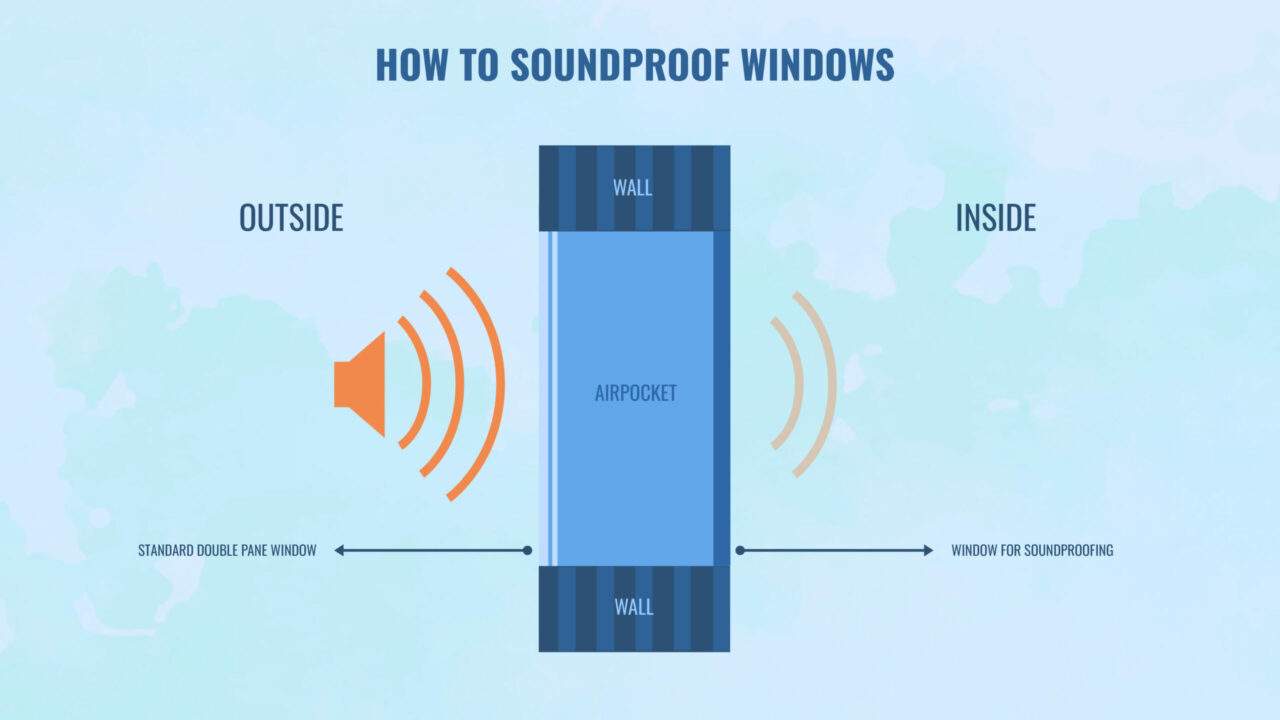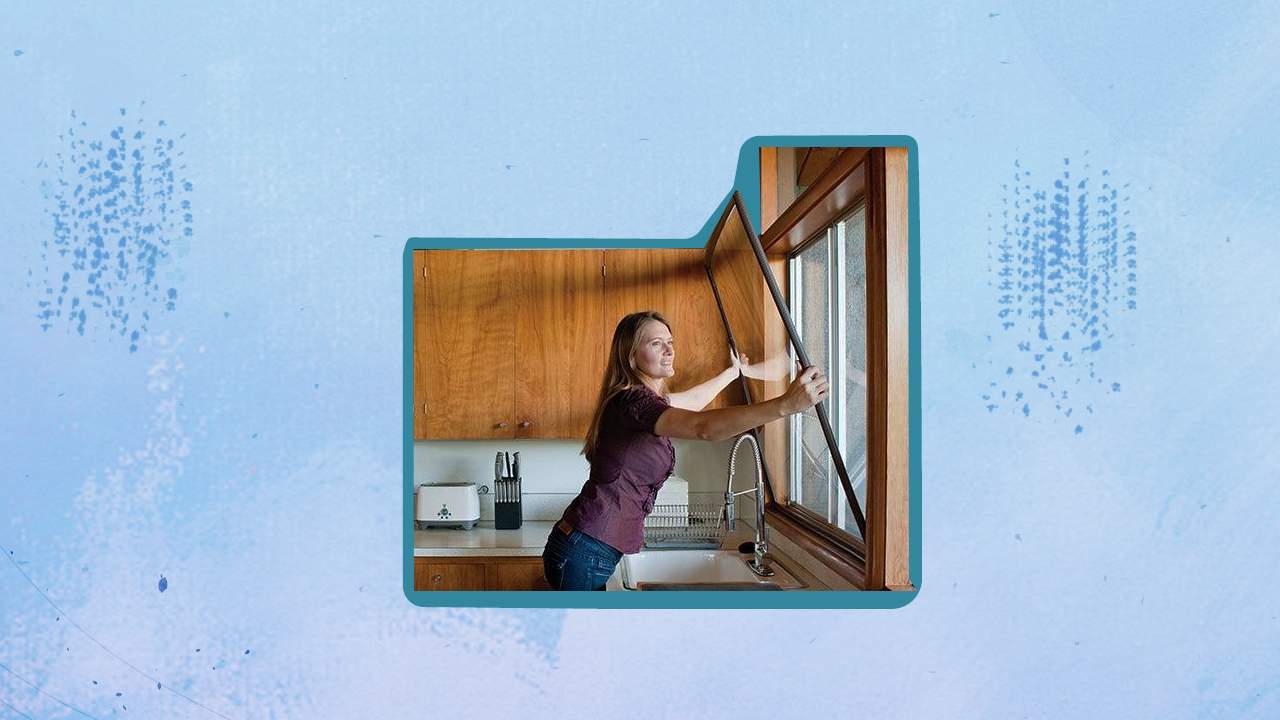How to Soundproof Windows: Blocking Sounds Coming From Your Window
The best technique to soundproof windows is to use double glazing or extra layers of glass. Window plugs, seals, storm windows, and soundproof drapes are affordable substitutes.
If you reside in a busy urban region, noise can be a pain to deal with. Additionally, the fact that most noise is uncontrollable, like birds chirping, can make us feel powerless to manage it.
We’ll help you navigate the world of DIY window soundproofing based on your acoustic goals, your budget, and the nature of the noise pollution problems you are dealing with.
10 Ways How to Soundproof Windows

Loud neighbors, busy streets, and close-by industrial activity can all produce loud noise levels that can be heard through your windows.
But DIYers have several comparatively simple options for soundproofing windows.
Although each approach has advantages and disadvantages, they are useful, especially when combined.
Let’s discuss the details so homeowners can decide with knowledge and get some rest!
Add Acoustic Foam or Caulk to your Window Frame

Air gaps and fissures around your windows, doors, and walls are one way sound can enter your house. Cracks are frequently seen at boundaries, such as on your window frames.
Filling up the air gap with acoustic caulk, like Green Glue Acoustical Caulk, is easy to seal off. This caulk can absorb sound and block off noise from outside.
While reducing sound transmission and maintaining windows’ STC, noise-proof acoustic caulk permits window opening and closing while blocking window noise.
If your windows aren’t properly sealed with acoustic caulk, you’ll still have acoustic problems even if you use noise-reducing window treatment.
Find a certain acoustical sealant. Acoustic caulk is designed to stay flexible and persist for years, unlike conventional caulk, which will ultimately stiffen and crack.
Add a Window Foam or a Window Plug to Your Window Frame
This is the cheapest DIY solution for window soundproofing. To reduce noise coming from your windows cheaply, you can affix a window plug to your window.
A window plug will muffle some outside noise, but it will also block out light. It is simple to remove the foam and then replace it.
However, foam is not a good choice for soundproofing a house. Sound absorption is not that good and can significantly decrease interior light pollution.
Additionally, having window plugs over your lovely windows can detract from the interior’s visual appeal. To balance your light and noise levels, you’ll need to keep moving them.
The brief loss of light may be justified when soundproofing is crucial to improve noise reduction from the outside slightly.
Add an Interior Acrylic or Glass Sheet
If you have prior DIY experience, you might be successful with your secondary glazing project, where you affix a piece of glass or acrylic to the inside of your current window.
You’ll need to put a metal frame on your current window. The acrylic sheet is then attached using magnets.
You won’t notice a significant acoustic change without laminated or acoustic-grade glass, so have that in mind before starting to deal with the noise problem.
Attaching an acrylic or glass sheet might be a realistic solution for mild noise issues but not very loud speech or noise problems.
Installing your glaze will be difficult with conventional window styles like double-hung windows.
Purchasing a retrofit double-glazing system could be wiser if you’re willing to spend the money. It is far less expensive than purchasing new double-glazed windows.
Install a Quilted Fiberglass Panel

The more solid and thick the material you use, the better it will reduce noise coming from outside your house. The curtains are not very thick.
Fiberglass panels with quilting are significantly denser and thicker. Over twelve pounds are contained on a panel four feet broad by eight feet tall and two inches thick!
The panel’s weight is excellent because it tends to lay flat on a window frame when hung with hooks from above. This is one of the best ways to soundproof a window.
The panels come with metal-reinforced eyelet holes. To hang the panel, you can install heavy-duty hooks around your window frame and insert them into the eyelets.
You can attach the edges using strong velcro to make the panels more effective. This makes a tight seal around the outside window, admitting even less sound.
While a quilted fiberglass panel is significantly more effective at absorbing sound and minimizing echoes than sound-deadening curtains, it’s less attractive.
If you want to know more about soundproof panels, here is our list of the best ones available on the market.
Install External Storm Windows
Installing storm windows on the exterior of your home is another option. Adding a layer of glass to your existing window will help to reduce noise.
The amount of air trapped inside the window, the thickness of the glass you use, and how effectively the frame is sealed will all affect how effective your storm windows are.
You want to ensure your DIY project is as close to professional as possible, with better quality materials producing better results.
Purchase Soundproof Curtains for Soundproofing Windows
Many people turn to soundproof curtains as a quick solution because they block and absorb sound and excess noise. Additionally, they are energy efficient.
The issue with this solution is that the noise absorption curtains will block the cold air between the window and the curtain’s back.
As a result, more condensation increases the risk of mold growth, further damage like crumbling window frames, and the associated high repair costs.
Noise-reducing drapes are frequently not worth the investment due to their modest noise-reduction advantages and high cost. They work best to minimize echoes.
The same amount of money would be better spent on double glazing, allowing you to enjoy an acoustically perfect space without the drawbacks of thermal drapes.
The added benefit is that you won’t have to choose your curtains based solely on how well they match the decor of your house.
If you want to know which soundproof curtains are best for you, here is our list of the best soundproof curtains.
Attach Noise Reducing Blinds or Shutters to the Interior Window
The more material you can place between the source of your noise pollution and the interiors, the better. Any blind installation absorbs sound very well.
For soundproofing, specialized honeycomb shades are the ideal option. They can absorb sound well as they have multiple layers inside, thanks to the honeycomb structure of their structure.
Additionally, effective noise-reducing window solutions are insulating blinds and wooden window shutters. Wood is a suitable material for sound attenuation since it is porous.
Use Mass Loaded Vinyl to Block Sound
You can choose a robust DIY soundproofing solution to soundproof windows normally covered with curtains or out of sight.
Mass-loaded vinyl can reduce sound waves, including soundproofing engine compartments, securing homes and cars, and window treatments.
It is made of heavy materials like barium sulfate or calcium carbonate, as well as PVC and vinyl, which give the substance its ability to block noise.
It is also useful for thermal insulation, turning sound waves into heat energy. There will be a noticeable difference in room temperature with these around.
Install Window Inserts Between the Window Frame
Soundproof window inserts are the most efficient technique to lessen the sound vibrations from unwanted noise if you reside in an area with heavy noise pollution.
About 5 inches in front of the interior face of your existing window, these glass inserts are fitted in the window frame.
Noise-reduction benefits are obtained from the insert than from double-pane windows alone because the air space between them prevents sound waves from passing through the glass.
The best inserts are constructed of laminated glass, a thick glass made of two layers of glass and a layer of plastic in the middle that effectively muffles vibrations.

Replace Single-Pane Windows With Double Glazed Windows
Replace single-pane windows with double-glazed windows if you occasionally hear a passing automobile or a moderate amount of external noise pollution, such as a lawnmower.
In contrast to double-pane windows, which are the norm in modern homes, single-pane windows, frequently seen in older homes, feature just one piece of glass.
Due to the lack of an air barrier between the outside and the glass in a single-pane window, almost all exterior noises may be heard inside the house.
STC ratings for a single-pane window range from 26 to 28, higher than noise reduction windows. As such, it would turn a car’s noise level (70 dB) into 42 dB.
Contrarily, the air space between a double-glazed window’s two panes helps stop the vibration of outside sounds via the glass, providing a better advantage for noise reduction.
Double-pane windows with an STC of 35 would offer a 7-decibel noise reduction advantage over single-pane windows compared to one with an STC of 28.
Even though this might not seem like much, a listener will feel a volume drop of almost 87 percent with a 7 dB difference.
How Much Do Soundproofing Windows Cost?
When trying to block sound, options may not be as affordable as they seem when you look at prices closely. When the installation is added, soundproof windows cost upwards of $1,000.
One frequently recommended alternative to many people is a full window replacement: buy the best and disregard the rest.
However, the cost for replacement windows is between $350-$850 for double-pane windows. Inserts are also another good choice. This runs between $250 and $500 for each.
Acoustic caulk costs anywhere from $14 to $100 on the low end, depending on how many windows need and how much caulking needs to be done on each window.
Although installing a window plug or acoustic caulking around your windows will likely cost less than $20 per window, you might not notice the difference.
You could easily spend several hundred dollars on a DIY secondary glaze, storm windows, and noise-canceling window treatments like specialized curtains and blinds.
Depending on how many windows you need to soundproof, you can spend $1,000 or more without getting the desired results.
So many factors go into successful soundproofing, from choosing the right materials to ensuring you don’t create more problems than you are solving.
Tips When Doing Window Soundproofing

There are a few things you should think about before purchasing your DIY soundproofing supplies. It matters what kind of sound you are attempting to filter out.
A professional in soundproofing, such as window installers, may assist you in developing a strategy that will work for your house based on the kind of noise you are experiencing.
The last thing you want when soundproofing windows is to spend hundreds or thousands of dollars on window treatments only to discover that they won’t make much difference.
Your walls and doors may potentially be the source of the noise. Even if you apply every DIY window covering technique, the sound will still enter your home through the walls.
Keep this in mind when creating an effective and efficient plan to soundproof a window. Consider the advantages and disadvantages of each DIY fix.
One of the traits that all DIY solutions have in common is that none are incredibly effective.
Despite being less expensive, none of these choices—not even their combined use—can match the soundproofing advantages of double glazing with laminated or acoustic-grade glass.
Compared to your DIY options, the noise reduction effect of forcing sound waves through two thick, highly treated glass panes and the gap filled with inert gas is enormous.
Don’t automatically think that double glazing costing thousands of dollars is required to achieve excellent acoustics.
Retaining the original charm of your existing windows while adding noise suppression is possible with retrofit double glazing, which is much less expensive than new double-glazed.

Frequently Asked Questions (FAQs)
Got more questions about soundproof windows? Here are our most frequently asked questions about the topic!
How Can I Soundproof My Existing Windows?
Ensuring all the crevices are covered with acoustic caulk and weatherstripping is the easiest way to soundproof a window without replacing it.
Then add a mix of blinds and curtains. You can use a window plug to muffle noise when you don’t require access to the window and then take it out when you do.
Is There a Window Film That Reduces Noise?
Unwanted traffic noise and loud speech can be effectively reduced with acoustic-dampening window films.
Frequently constructed of plastic vinyl or PVC that is environmentally friendly, window films adhere using static cling, making them reusable and simple to apply or remove.
Are Triple-Pane Windows Worth It?
From a soundproofing standpoint, Windows with three panes are not good since the triple-leaf effect would impact them.
Triple-pane windows will always have a greater resonance point than double-pane ones. As a result, these windows always provide less sound isolation, especially at lower frequencies.
Conclusion
There are inventive techniques to soundproof windows that vary in price and degree of intrusion.
You may make your home a more tranquil place where your family can unwind and prosper by reducing noise.
Knowing the finest techniques for soundproofing windows will provide you with various options to develop a solution that fits any budget.This is only how to soundproof windows. If you want to know about soundproofing your entire room, you can check out our article on how to soundproof a room.




